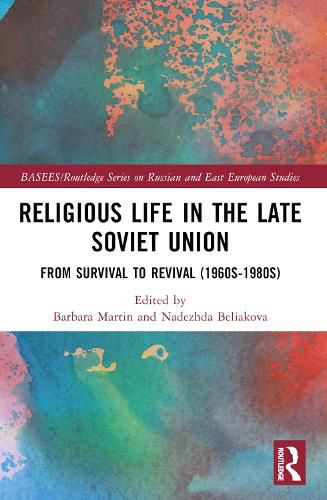Readings Newsletter
Become a Readings Member to make your shopping experience even easier.
Sign in or sign up for free!
You’re not far away from qualifying for FREE standard shipping within Australia
You’ve qualified for FREE standard shipping within Australia
The cart is loading…






This book presents the first large overview of late Soviet religiosity across several confessions and Soviet republics, from the 1960s to the 1980s. Based on a broad range of new sources on the daily life of religious communities, including material from regional archives and oral history, it shows that religion not only survived Soviet anti-religious repression, but also adapted to new conditions. Going beyond traditional views about a mere "returned of the repressed", the book shows how new forms of religiosity and religious socialisation emerged, as new generations born into atheist families turned to religion in search of new meaning, long before perestroika facilitated this process. In addition, the book examines anew religious activism and transnational networks between Soviet believers and Western organisations during the Cold War, explores the religious dimension of Soviet female activism, and shifts the focus away from the non-religious human rights movement and from religious institutions to ordinary believers.
$9.00 standard shipping within Australia
FREE standard shipping within Australia for orders over $100.00
Express & International shipping calculated at checkout
This book presents the first large overview of late Soviet religiosity across several confessions and Soviet republics, from the 1960s to the 1980s. Based on a broad range of new sources on the daily life of religious communities, including material from regional archives and oral history, it shows that religion not only survived Soviet anti-religious repression, but also adapted to new conditions. Going beyond traditional views about a mere "returned of the repressed", the book shows how new forms of religiosity and religious socialisation emerged, as new generations born into atheist families turned to religion in search of new meaning, long before perestroika facilitated this process. In addition, the book examines anew religious activism and transnational networks between Soviet believers and Western organisations during the Cold War, explores the religious dimension of Soviet female activism, and shifts the focus away from the non-religious human rights movement and from religious institutions to ordinary believers.